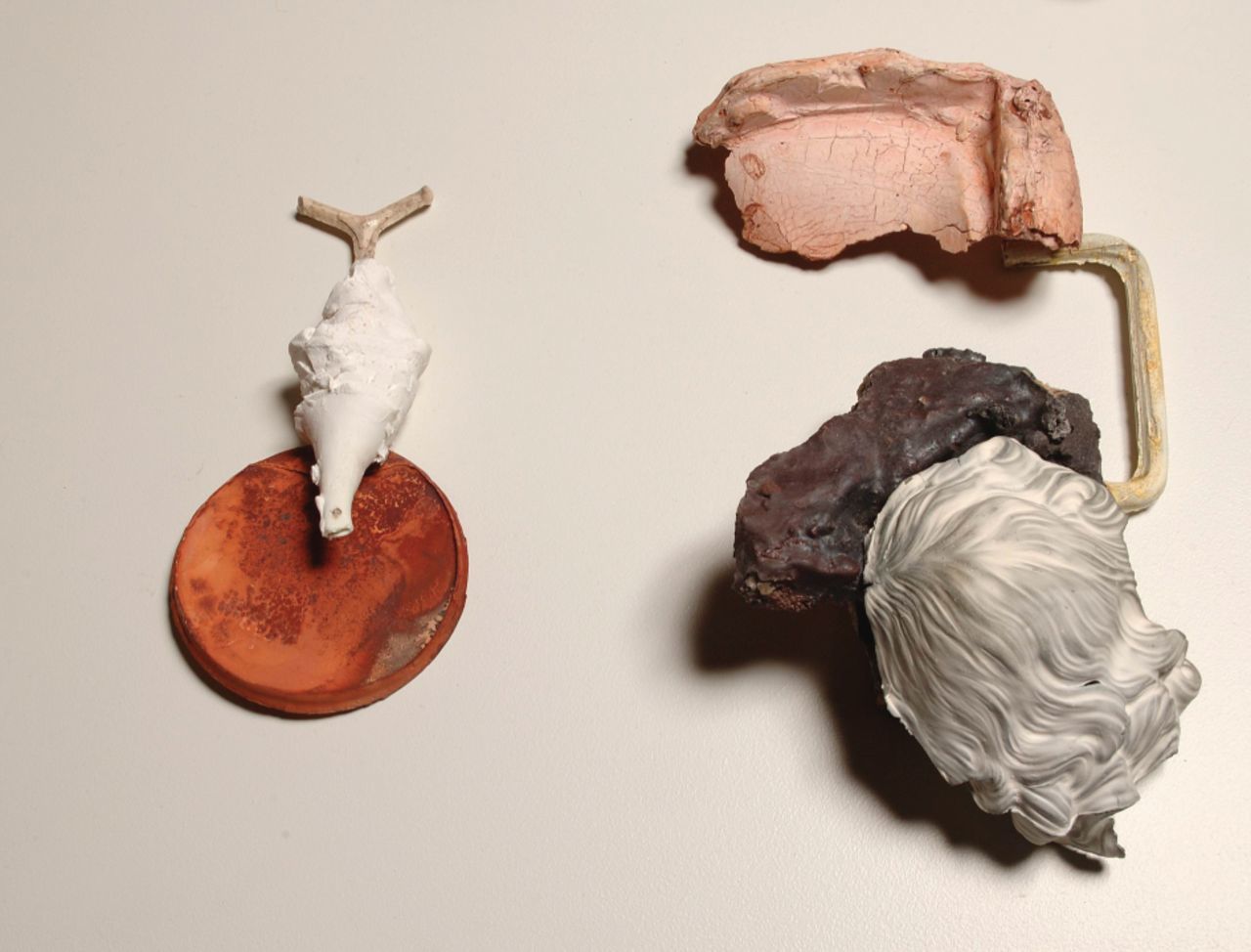The taxonomy of the dump
The current popular interest in three-dimensional printers is revealing, underlining that many of us feel that the production of goods is out of our control. The success of Matthew Crawford’s book The case for working with your hands or Why office work is bad for us and fixing things feels good (2009) is symptomatic of this reaction against passive consumerism. So, too, is the current tendency for artists, designers and craftspeople to make work through recycling. Artists’ interest in the sheer volume of stuff is not necessarily a comment on overproduction, rapid obsolescence and waste. But artists certainly take inspiration from the most dramatic site of recycling—the world’s rubbish dumps.
All round the globe (though not in the so-called First World), marginalized men, women and children are making their own contribution to material efficiency. The city waste dump at Olusosun in Lagos, Nigeria, is, as the documentary film-maker Gavin Searle [39] discovered, a surprisingly ordered environment. The scavengers help each other out. Theft is frowned upon. Troublemakers are banned from the dump. Each scavenger is busy categorizing his or her specialism. Some collect glass, some collect copper wire, some collect rags and so on. In order to make a living, the scavengers have to work systematically, creating taxonomies of objects. The scavengers on the world’s rubbish dumps lead lives that embody a form of creativity, albeit in extreme conditions. Of course, there are dumps and dumps. Some are pretty much off limits; the southern Chinese city of Guiyu is where the USA (and probably the UK) sends thousands of tons of electronic waste each year. Our nice clean computers and neat mobiles are full of poisons in the form of lead, cadmium and polyvinyl chlorides. If Gavin Searle were able to celebrate the power of the human spirit on the Lagos dump, then there is surely nothing to celebrate at Guiyu, where covert photography and filming have recorded primitive and dangerous recycling in one of the unhealthiest places on the Earth [40].
The dump, as evidence of our limitless desire for goods and the sheer monumentality of stuff, the goods that surround us, has become a subject. Artists have transformed rubbish into large-scale monuments that aspire to a new kind of sublime [41]. For example, the British artist Michael Landy’s installation Breakdown examines overconsumption from the perspective of an individual’s own possessions. In 2001, Landy assembled all his possessions in a former London department store. He found that he owned over 5000 objects—from pencils, to scraps of paper, to a car. These were catalogued as artworks, clothing, equipment, furniture, kitchen, leisure, motor vehicle, perishables, reading material and studio material, and placed on a moving production line. In a strange reversal of manufacture, all Landy’s possessions were dismantled by a group of white-coated technicians. The process took one week. Breakdown was a huge popular success. Young people flocked to see objects being taken apart, sorted, shredded and crushed for recycling [42].
Landy’s Breakdown underlined the scale of our consumer needs. But we need further reminding that the centres of manufacturing are constantly on the move, chasing economic efficiency, apparently careless of the effect on lives and communities. The artist Neil Brownsword’s Salvage Series (2005) reflects on UK de-industrialization (figure 3). It is an installation made up of hundreds of items associated with the industrial production of ceramics—drip trays and trivets, props and spurs used to support objects in the kiln, tangled strips of clay left after turning, collapsed and fused saggars and the ghostly residue left by the process of plaster-lining damaged moulds. Industrial by-products are put to the service of memory, of a shrinking culture of making at Stoke-on-Trent as factories make workers redundant and relocate production to the Far East [43].

Figure 3. Neil Brownsword, Salvage Series, 2006 (detail).
Waste is subject and object in the sculptures of the British artist Phyllida Barlow. She writes [44]:
We are competing with materialism that is on such a gigantic scale. There is a giant global industry of objects and how does one compete with that?
Her sculpture is in part a resistance to the glamorous art object—she cites disparagingly the work of Jeff Koons. She uses only cheap discarded materials to make objects. Untitled DIY2006 was made on the spot in Seoul, Korea, out of freely available packing materials. Most of her art is subsequently dismantled and recycled. Barlow’s improvisatory approach is often inspired by random relationships between objects she sees on the streets or beside railway tracks.
The Royal Society Publishing, UK

PROFILE
The Royal Society has published ground-breaking research for more than 350 years, including pioneering papers by Isaac Newton, Charles Darwin and Rosalind Franklin. Our international, peer reviewed journals continue to publish high quality research across the full range of science and provide an excellent author service.
